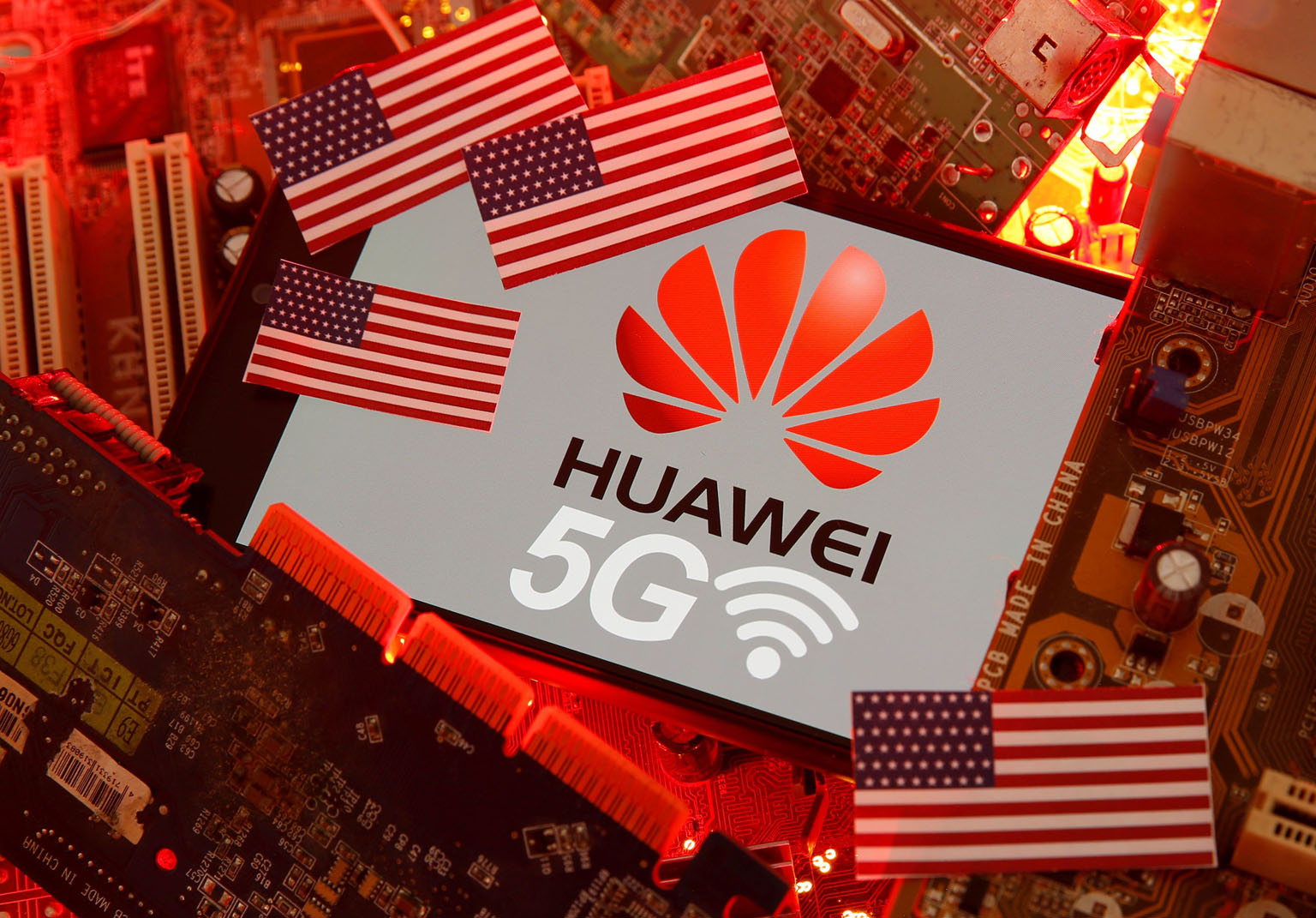Forget 5G - US and China are already fighting for 6G dominance
Sign up now: Get insights on Asia's fast-moving developments

Despite multiple attempts by the US to take it on, Huawei Technologies towers over rival 5G vendors globally, mostly by offering attractive prices.
PHOTO: REUTERS
Follow topic:
WASHINGTON • Most of the world is yet to experience the benefits of a 5G network, but the geopolitical race for the next big thing in telecommunications technology is already heating up.
For companies and governments, the stakes could not be higher. The first to develop and patent 6G will be the biggest winners in what some call the next industrial revolution.
Though still at least a decade away from becoming reality, 6G - which could be up to 100 times faster than the peak speed of 5G - could deliver the kind of technology that has long been the stuff of science fiction - from real-time holograms to flying taxis as well as Web-connected human bodies and brains.
The scrum for 6G is already intensifying even as it remains a theoretical proposition, and underscores how geopolitics is fuelling technological rivalries, particularly between the United States and China.
"This endeavour is so important that it's become an arms race to some extent," said Mr Peter Vetter, head of access and devices at Nokia's research arm Bell Labs. "It will require an army of researchers on it to remain competitive."
Years of acrimony under the Donald Trump administration have hit Chinese technology firms hard, but that has not stopped the country from emerging as the leader in 5G. It has the world's largest 5G footprint, and - despite multiple attempts by the US to take it on - Huawei Technologies towers over rival 5G vendors globally, mostly by offering attractive prices.
The development of 6G could give the US the chance to regain lost ground in wireless technology.
"Unlike 5G, North America will not let the opportunity for a generational leadership slide by so easily this time," said Mr Vikrant Gandhi, senior industry director of information and communications technologies at consultancy firm Frost & Sullivan in the US.
"It is likely that the competition for 6G leadership will be fiercer than that for 5G."
It is clear that 6G is already on the minds of policymakers in both Washington and Beijing. Mr Trump tweeted in early 2019 that he wanted 6G "as soon as possible".
China is already moving ahead. It launched a satellite last year to test airwaves for potential 6G transmission, and Huawei has a 6G research centre in Canada, said news reports. Telecommunications equipment maker ZTE has also teamed up with China Unicom Hong Kong to develop the technology.
The US has shown it has the ability to handicap Chinese firms, as in the case of ZTE, which almost collapsed after the Commerce Department banned it for three months in 2018 from buying American technology. Similar moves could hamper Huawei's 6G ambitions.
Washington has already started to sketch out the 6G battle lines.
The US Alliance for Telecommunications Industry Solutions launched the Next G Alliance in October to "advance North American leadership in 6G". Its members include tech giants like Apple, AT&T, Qualcomm, Google and Samsung Electronics, but not Huawei.
The alliance mirrors the way that the world has been fractured into opposing camps as a result of 5G rivalry. Led by the US, which identified Huawei as an espionage risk - an allegation the Chinese giant denies - countries including Japan, Australia, Sweden and the United Kingdom have shut the firm out of their 5G networks. But Huawei is welcomed in Russia, the Philippines, Thailand, and other countries in Africa and the Middle East.
The European Union last December also unveiled a 6G wireless project led by Nokia, which includes companies like Ericsson and Telefonica, as well as universities.
While 6G may not reach its potential at least 15 years from now, researchers have an ambitious vision for what the next-generation network could offer.
At a potential rate of 1 terabyte per second, 6G is not only much faster, but also promises a latency - which causes lags - of 0.1 millisecond, compared with 1 millisecond, or the minimum for 5G.
However, major scientific obstacles abound, for example, researchers must solve the question of how airwaves travelling extremely short distances can easily penetrate materials such as water vapour or even a sheet of paper.
Networks may need to be ultra-dense, with multiple base stations installed not only on every street, but also in each building or even each device people use to receive and transmit signals. That is set to raise serious questions over health, privacy and urban design.
BLOOMBERG

